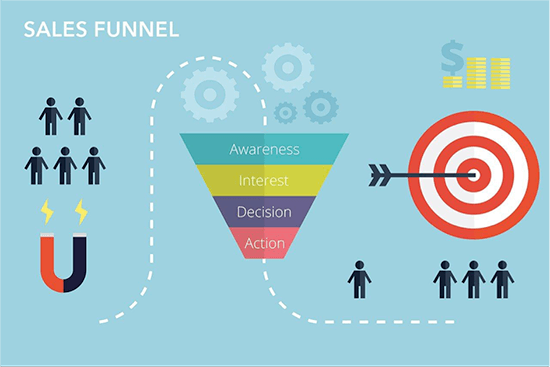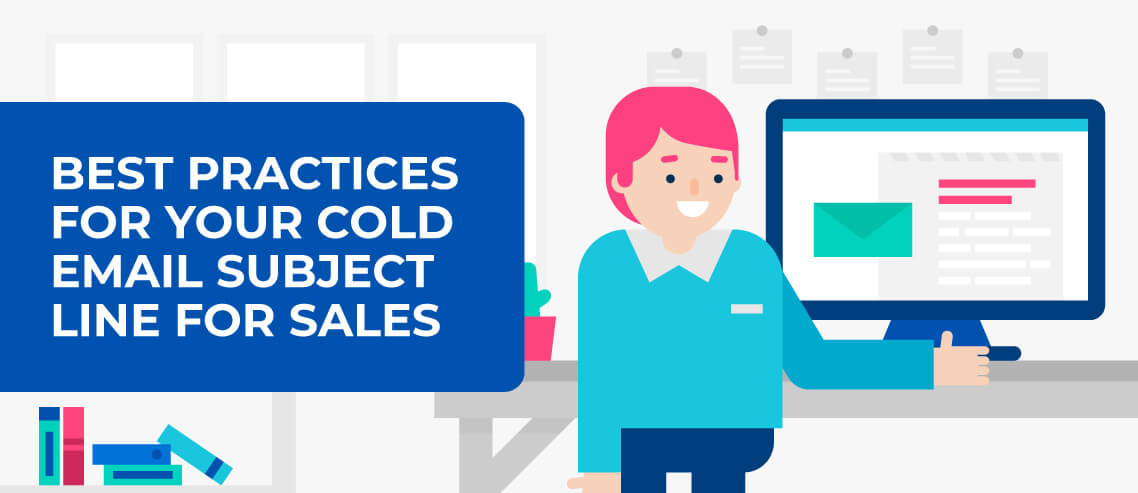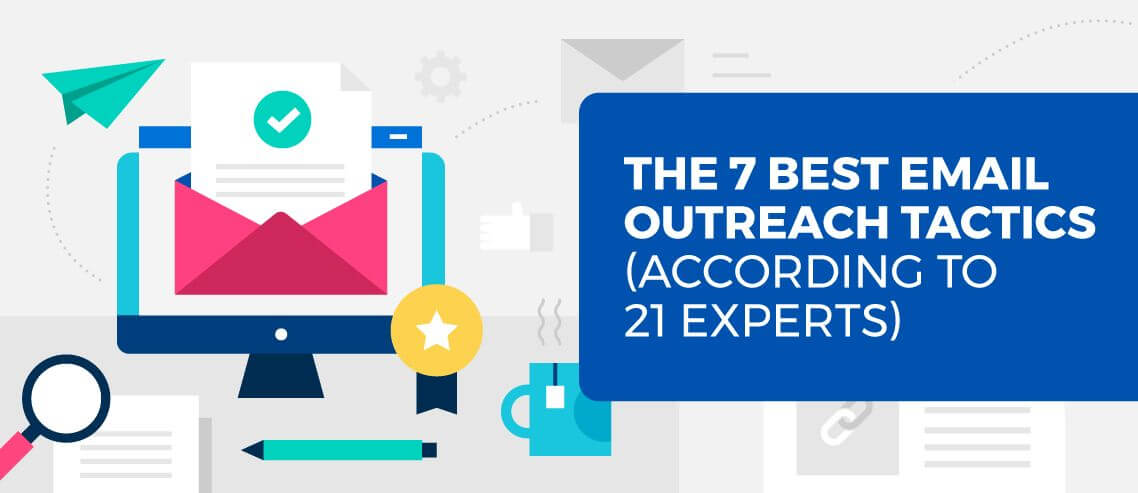How Sales Managers Can Build a Culture of Cold Email Success

Contents
The sales department is often set in its ways. Some things may have changed over the years, but the art of selling remains the same – in theory. But as a sales manager, it’s up to you to introduce new tools, channels, and tactics that may not be part of the traditional equation, but deserve a spot.
Take cold emailing, for example.
There will be reluctance. And pushback. The marketing department might not like the idea because of the negative connotations (that is, if they’re not already on the cold emailing bandwagon), but the sales department is going to hate it. Cold? Email? No thanks.
So you’re going to have to convince them. Persuade them that cold emailing is the way forward, and a powerful channel they should be using.
In a perfect world, your sales and marketing departments are aligned and working together. They may see it work for their colleagues, but sales may consider email the domain of leads and nurturing, not closing and selling. After all, over 71% of the sales force is still face-to-face, aka field sales.
But they’re wrong.
As a sales manager, you can build a culture of cold email success with a little grit, determination, and elbow grease. Show them. Prove it to them. Convert them.
Sell them.
It might be as simple as pointing out a few compelling statistics. Ask your sales staff to consider:
- There are roughly 269 billion emails sent and received each day, and that number is expected to hit nearly 320 billion/day by 2021.
- Worldwide email users total 3.7 billion, a number that should hit 4.1 billion in the next 3-4 years (that’s more than half the world’s population).
- The average open rate for North America towards the end of 2016 was 34.1%, while the average click-through rate (CTR) was 3.1%.
- Industry-specific benchmarks for 2017 include a 17.81% open and 1.92% CTR for marketing and advertising, and a 20.96% open and 2.50% CTR for retail.
- Just over 50% of American consumers check their email at least 10 times per day.
- Email is consistently the most preferred channel for consumers to receive communication from brands across every industry.

The numbers are astronomical. The success rate (opens and clicks) is decent at worst. And its popularity and the preference for it is undeniable. Email is not dead.
If you see that your sales department still isn’t convinced – things are rarely that simple – it’s time to pull out the big guns.
Why Traditional Tactics Aren’t Always Best
Let’s dig a little deeper and get a little more industry-specific. Sales folks like their traditional ways because it’s how they’ve always done things, and it’s (more or less) worked for them.
But…the times they are a-changin’.
Door-to-door selling, face-to-face meetings, and cold calling are antiquated tactics, if for no other reason than they don’t represent the way we do business today.
If you only sell to a limited geographic area, and you don’t have dozens or hundreds of customers at any given moment, then you might be able to get away with sticking to those techniques. Your few customers would undoubtedly appreciate the attention and personal touch.
But let’s be realistic: most of us are working with larger areas and larger numbers. Calls and meetings simply aren’t possible or scalable.
“Advertising is salesmanship mass produced. No one would bother to use advertising if he could talk to all his prospects face-to-face. But he can’t.” ~Morris Hite
Meetings take prohibitively too much time, and you’re limited as to where you can physically be. Cold calls eliminate the geographical restrictions, but they still require a great deal of time and effort for each individual customer or prospect.
But email? It’s fast, far-reaching, and scalable as quickly as you can add the addresses.
And here’s the best part: email can work at any stage of the sales funnel. Awareness, interest, decision, action, advocacy, and beyond. Tailor an email template for each level, personalize as much as possible, and ship it out to as many as necessary with the click of a button.

It’s the preferred communication channel, used by billions, and available at home, at work, and on the go.
It’s time to update.
Present a Case Study or Two
Sometimes, nothing convinces faster than a little hard evidence.
If everything so far has your sales staff rolling their eyes and yawning, try a few concrete success stories.
Take Birchbox, for example. Founded in September 2010, it’s one of the first and most successful monthly subscription companies. They ship a box of 5-6 beauty product samples for only $10/month.
Co-founder and CEO Katia Beauchamp used cold emailing to find both cosmetic companies to partner with and provide the samples, and new customers. She built it up from nothing to over one million subscribers and nearly $87 million in venture capital.
“I cold-emailed every CEO of the beauty industry you can imagine, and it worked.” ~Katia Beauchamp, CEO at Birchbox
With a compelling subject line – “Reimagining beauty retail online” – she landed several big beauty brand names as partners, which helped secure funding and brought in her first customers.
And all with cold email.
Or how about LeadFuze? The automated B2B lead gen platform went from no revenue to $30,000/month in just one year. You read that right.
How’d they do it? One guess (hint: cold email). Founder Justin McGill leaned heavily on cold email outreach. He researched potential leads, then sent a simple 4-part cold email series:
- QVC message (Question-Value Prop-Closing CTA)
- Case Study
- Value Add
- “Break Up” message
The QVC is important, but the subsequent follow-ups are crucial. In one study, a campaign with 1-3 emails saw an average reply rate of 9%. One with 4-7 emails saw that rate triple to 27%.
Businesses can and do grow and sell with cold email.
Dissect Some Successful Ones
Once you’ve shown a few exciting examples of companies using them, it’s time to take a closer look at what separates the successful cold emails from those quickly ignored or deleted.
You can find plenty of examples online. Then, reverse engineer them as a team, examining them closely to see what makes them so powerful, and what – if anything – they have in common.
Doing this as a group will allow each member to better understand what makes them work, and how to replicate that success in their own messages.
A good place to start is this list of 26 examples. Each one is broken down and explained for you, complete with a comparison and explanation of the differences between cold email and spam.
By now, each salesperson should be starting to see the light and itching to try their hand at writing their own.
But not so fast.
Create a List of “X Commandments”
Rules are not only useful, but absolutely critical at this point. You want to ensure everyone is on board, understands the basic concepts, and will be drafting using the exact same guidelines.
While tearing a few examples apart, or just after, come up with a list of X rules and guidelines for powerful, successful cold emails. Don’t just give a list to your staff. Have them collaborate and make a list based on what they’re seeing in the examples. It gives them ownership and a greater comprehension of why and how.
Hang it somewhere in the sales department. Share the document with everyone on your staff.
As manager, you get a sneak-peek cheat sheet, with my compliments:
- The subject line must be intriguing, compelling, and irresistible.
- Keep it brief, ideally short enough that they can read the whole thing without having to scroll down on their smartphone (most email is opened on a mobile device).
- Introduce yourself quickly. No one cares about you at this point. Get to what you can do for them.
- Personalize as much as you can. There’s always something you can get from their social media accounts, blog, mutual connections, and so on.
- Spend the bulk of your time on the subject line and first sentence or two. That’s what most people will use to decide whether to open it or not.
- Make your call-to-action simple, straightforward, clear, and near impossible to refuse. Start small.
- Templates can be effective and convenient, provided you personalize parts of them.
There will likely be others your team discovers. Add them. This is, after all, your collective list of commandments.
Follow the rules. Work hard to turn a ‘no’ into a ‘yes’ without being aggressive or pushy. Consider those the golden rules.
Follow a Standard Operating Procedure
There are an infinite number of ways you could draft, design, and implement a cold email campaign. To succeed as a whole, the department should be using the same workflow. So create a “standard operating procedure” (SOP) for the most common situations and campaigns (win-back, retention, various stages within the funnel, thanks, and so on).
It ensures consistency regardless of who is taking the lead or following up. It maintains the preferred voice and tone for the brand. And it makes it all fast, efficient, and accessible.
Each campaign should include the message templates – with designated space for personalization and for individual sales staff to make them their own – for each email in the series, the timing or triggered action for each (always chose customer-triggered over static time whenever possible), and flowcharts for every “if this then that” scenario that’s likely to occur.
Draft together. Gather feedback. Tweak together. Map it all out. Have everything polished and loaded, ready to launch at a moment’s notice.
A cold email SOP in place and ready to go means everyone has no excuse not to use it. It’s good for them, good for the department, and good for you.
Tips, Tricks, and Two-Cents
A quick online search will deliver dozens of results for “cold email best practices” or “how to write a cold email.” Definitely check at least a few of them out.
Beyond that, there are a few useful tips and tricks to consider while you’re exploring and experimenting in the beginning.
- The “appropriate person” method. Include a quick note towards the end of your cold email asking the recipient to forward your email to the “appropriate person” if they are not the one you should be talking to about whatever it is you’re selling. Most do, and most will open and read an email forwarded from a colleague. Win-win.
- The “waterfall technique.” Identify your true target, then go after everyone above them: their immediate supervisor, manager, department head, VP, even up to and including the CEO. Send essentially the same email to 4 of them – personalized, of course – and include the “appropriate person” method described above. Everyone will pass it down, so that when you do eventually reach out to your intended target, you can legitimately say that the CEO or VP of Marketing told you to talk to them. Instant open, click, and reply.
- Focus on the subject line and first few sentences. They’re crucial, and could be the difference between success and failure.
- Always, always, always follow up, and follow up again. And again. And again. 80% of sales need up to five follow-ups, but 44% of salespeople give up after just one.
- Like everything else, always be testing, monitoring, and improving your emails and templates.
“Tests are important and help us to understand our customers. Good selling is based on good testing.” ~Claude Hopkins
One final push: inevitably, someone will say they prefer cold calling. Let me be clear: there is no contest. Outreach via cold email is going to deliver better results. Guaranteed.
People are using phones less and moving away from their desks, telephone numbers are more difficult to track down, and people are reluctant to answer calls from unrecognized numbers – to say nothing of the increased time and effort they take to complete.
Cold email is superior in literally every way.
Everyone wants to succeed, to excel, to do well at what they’re paid to do. Demonstrate beyond a shadow of a doubt that cold email can improve upon everything they’re currently doing, and you’ll have a room full of converts. Start today.
Image: Pixabay




